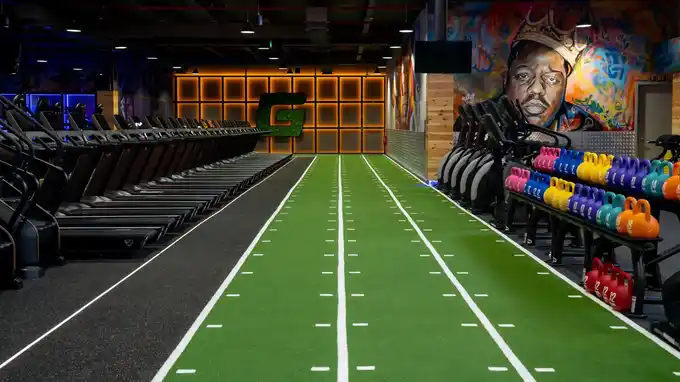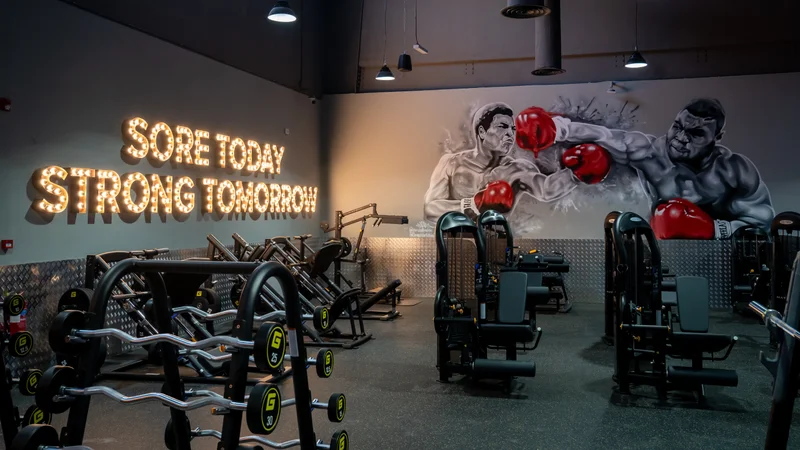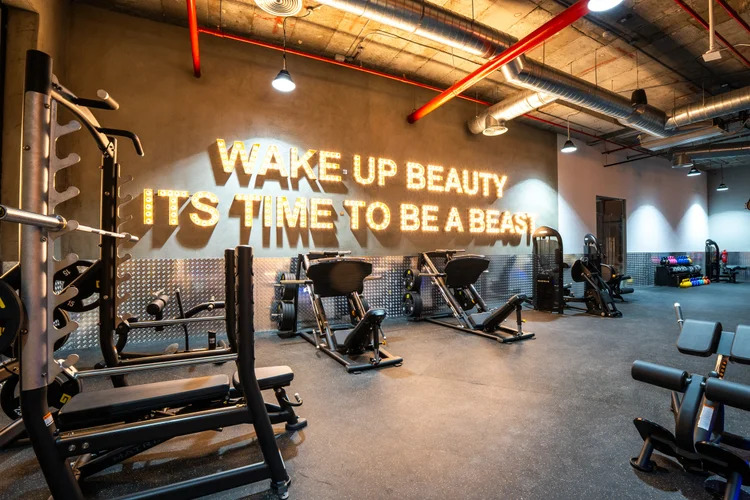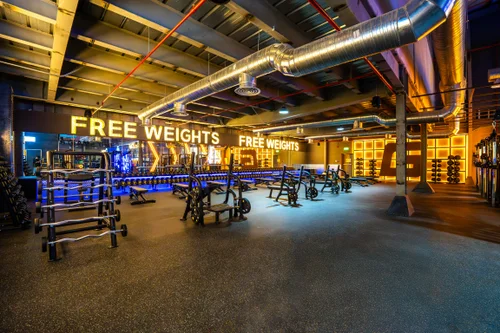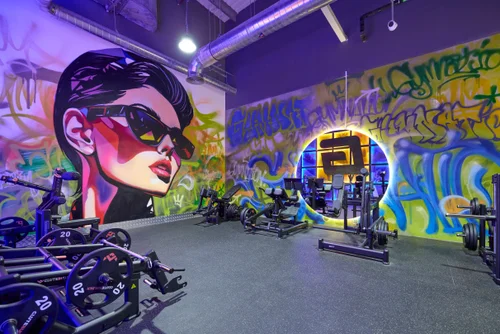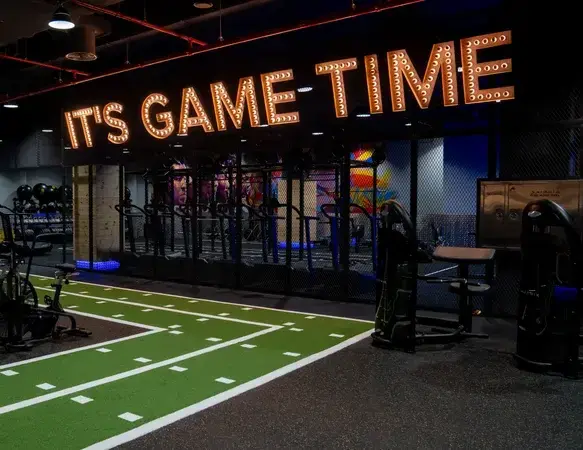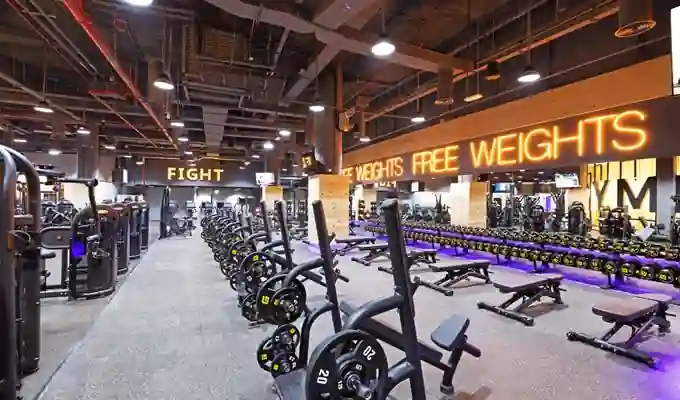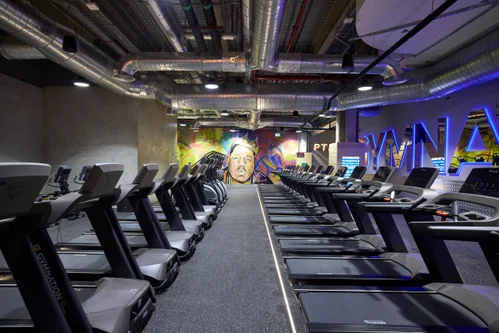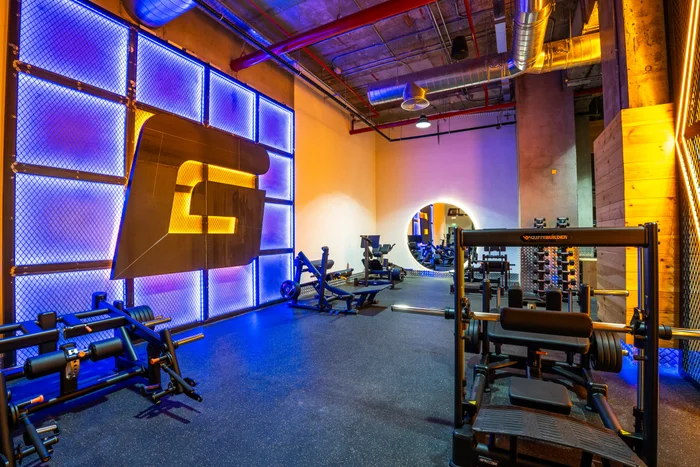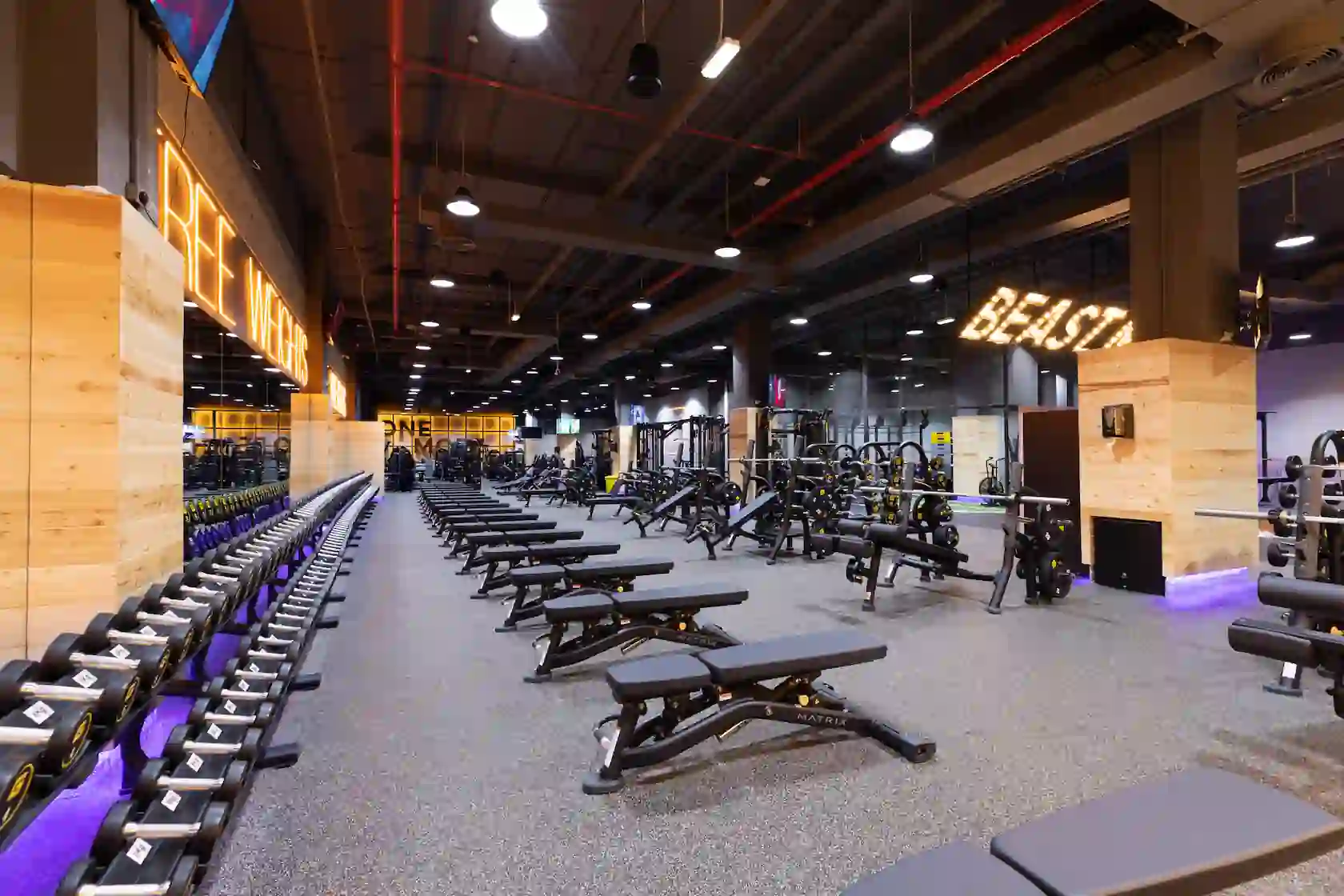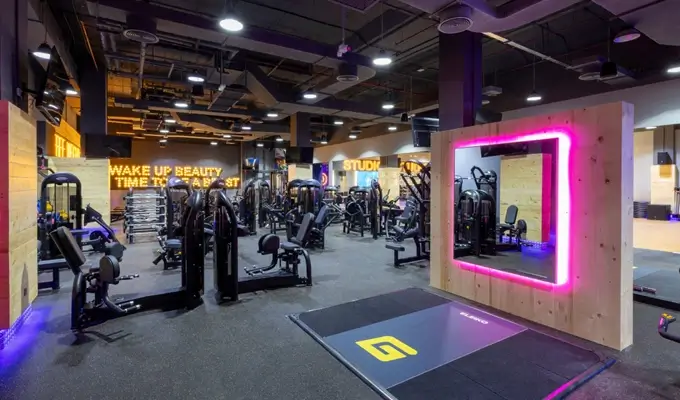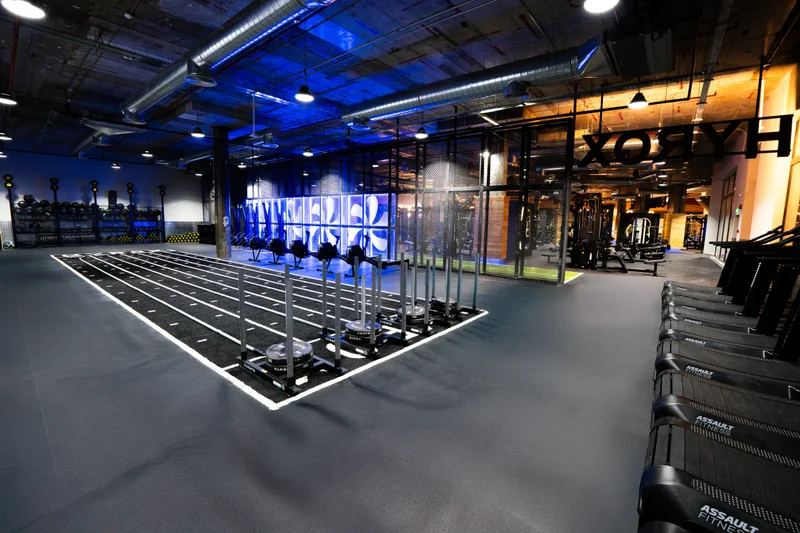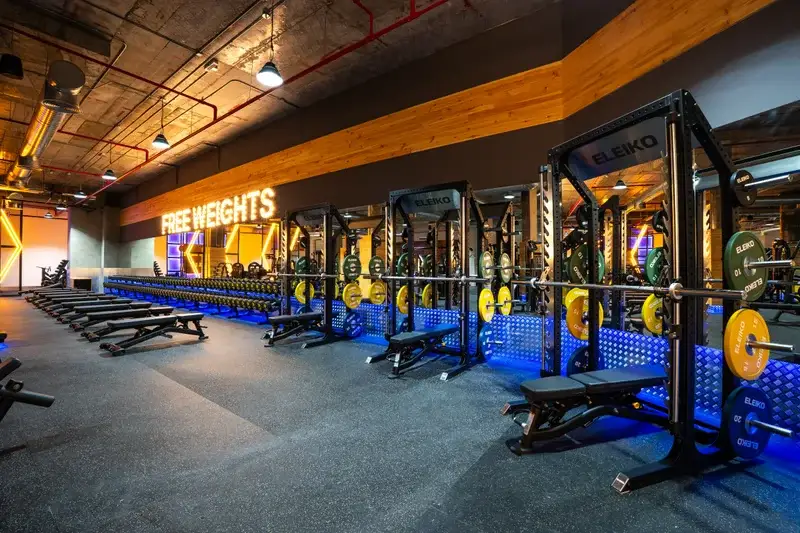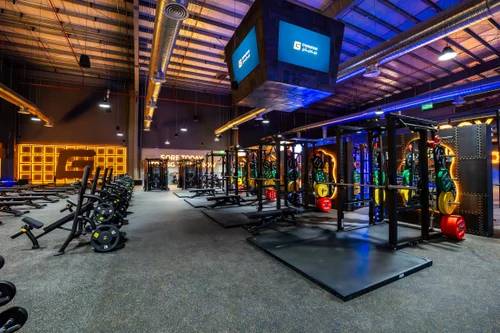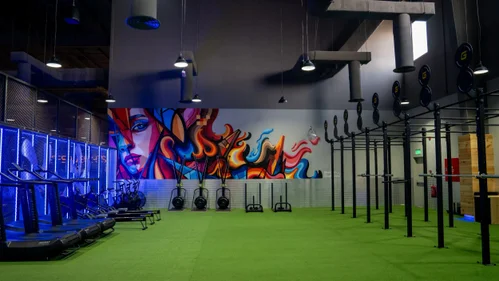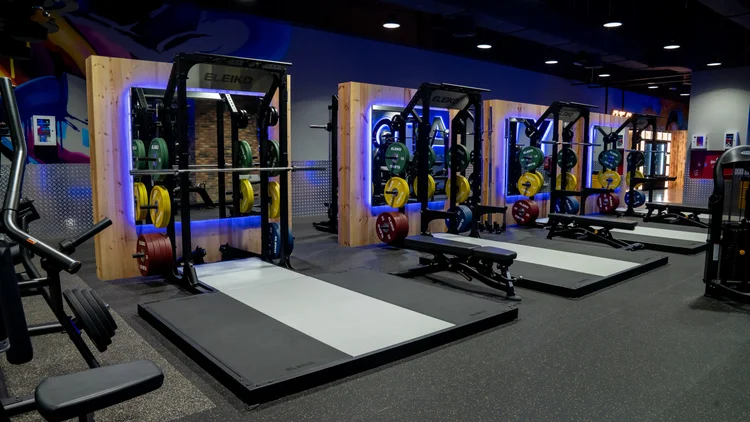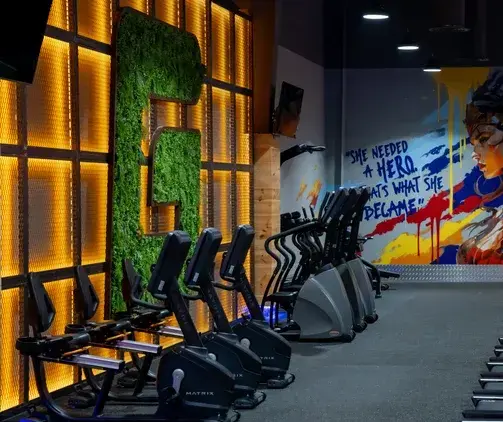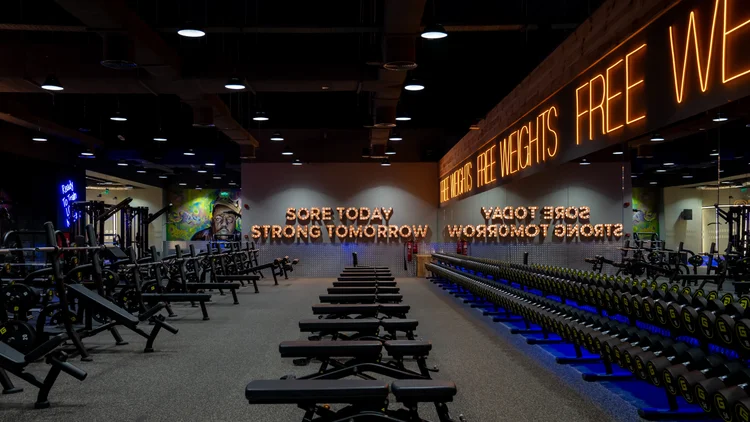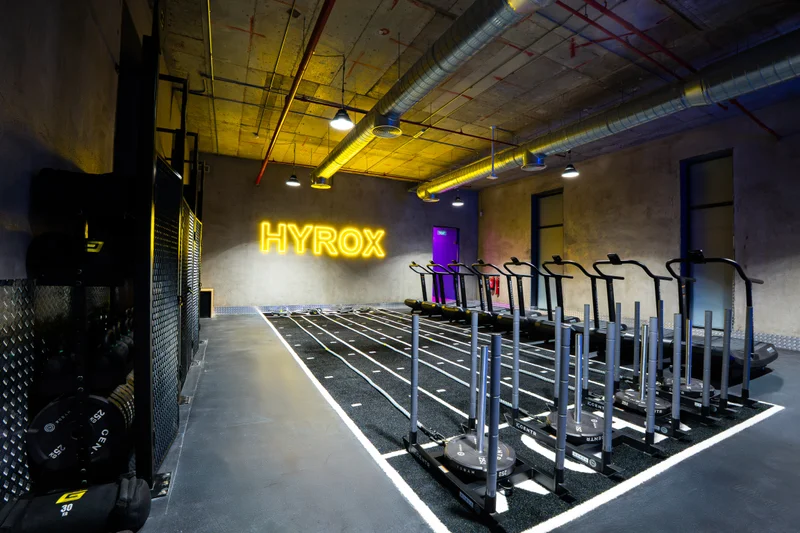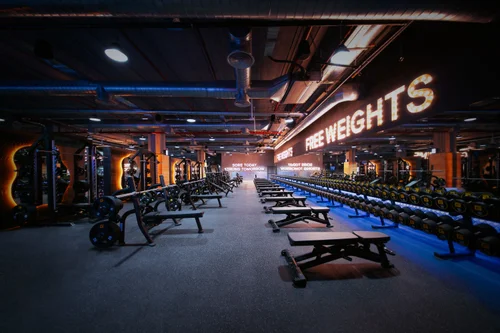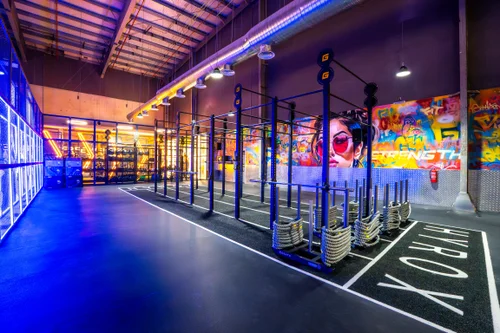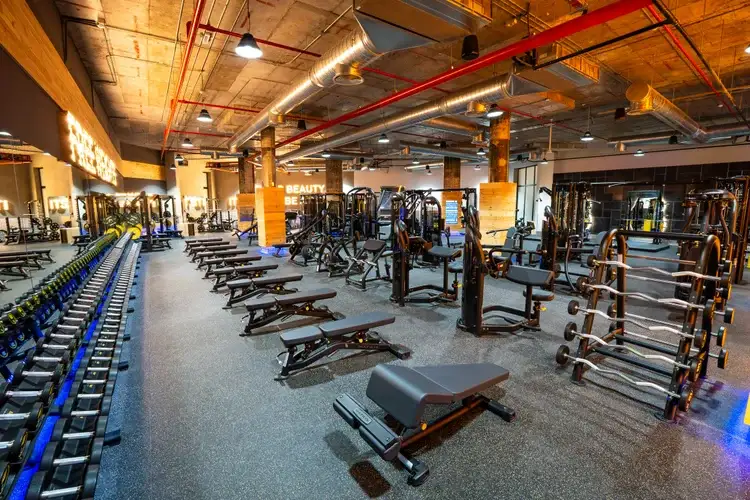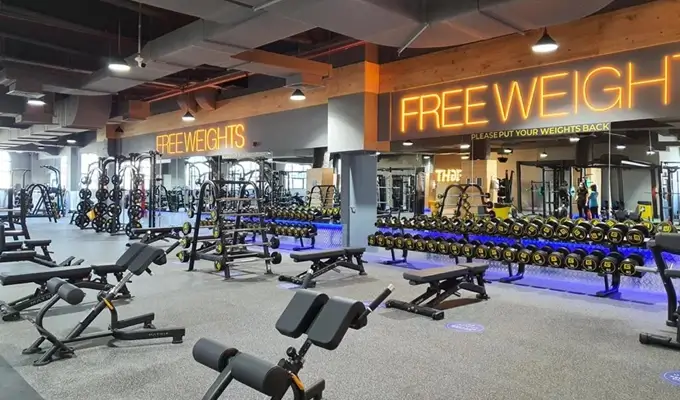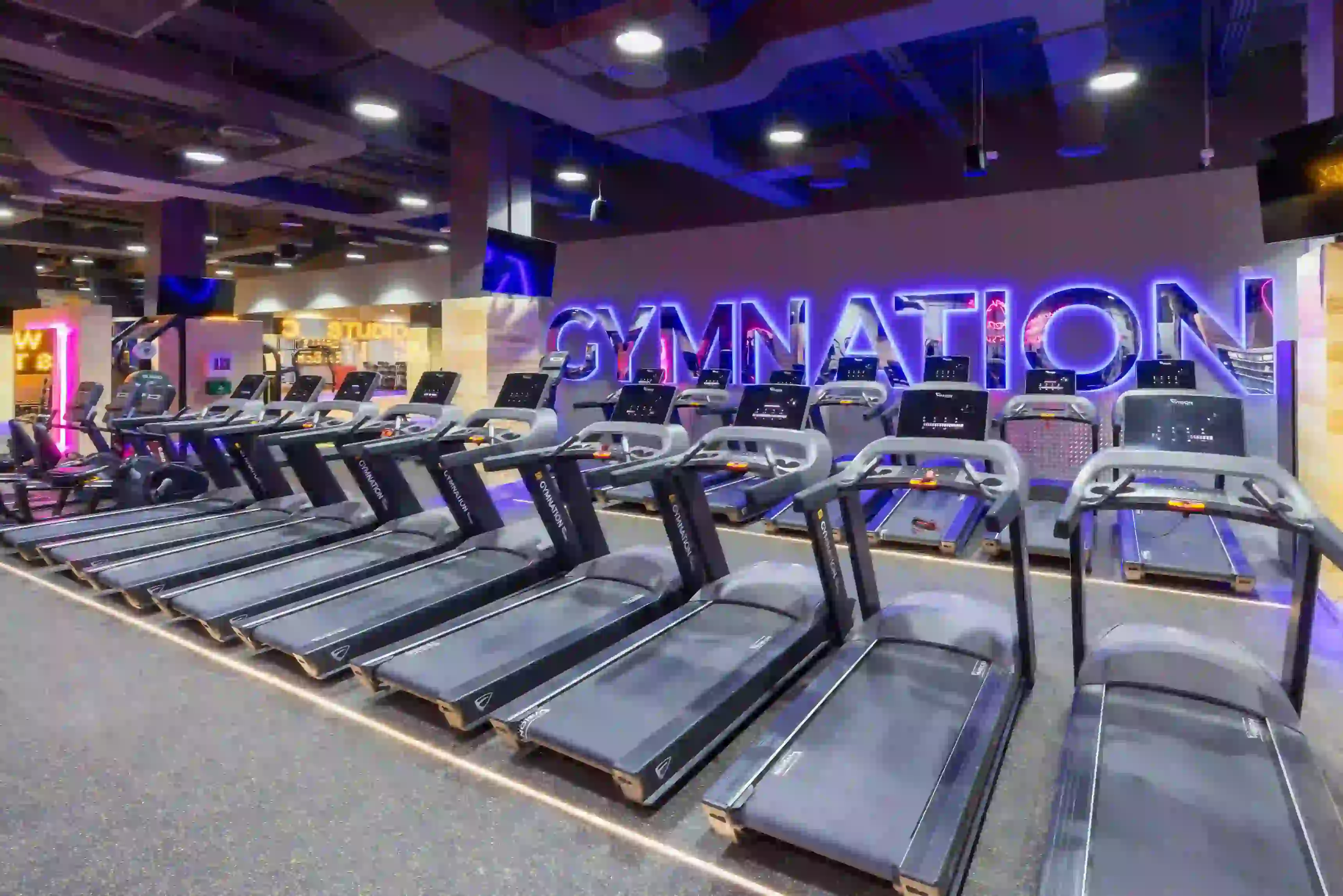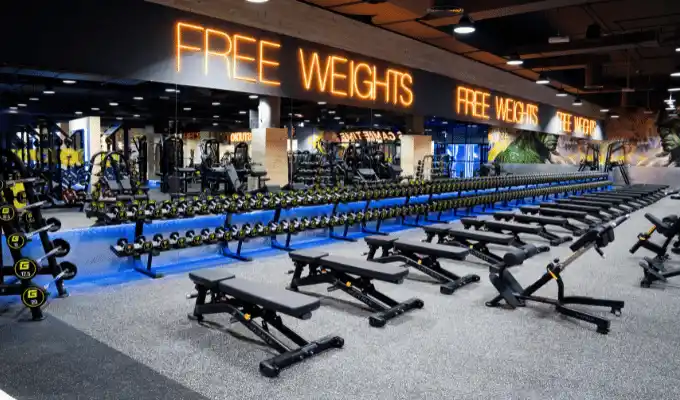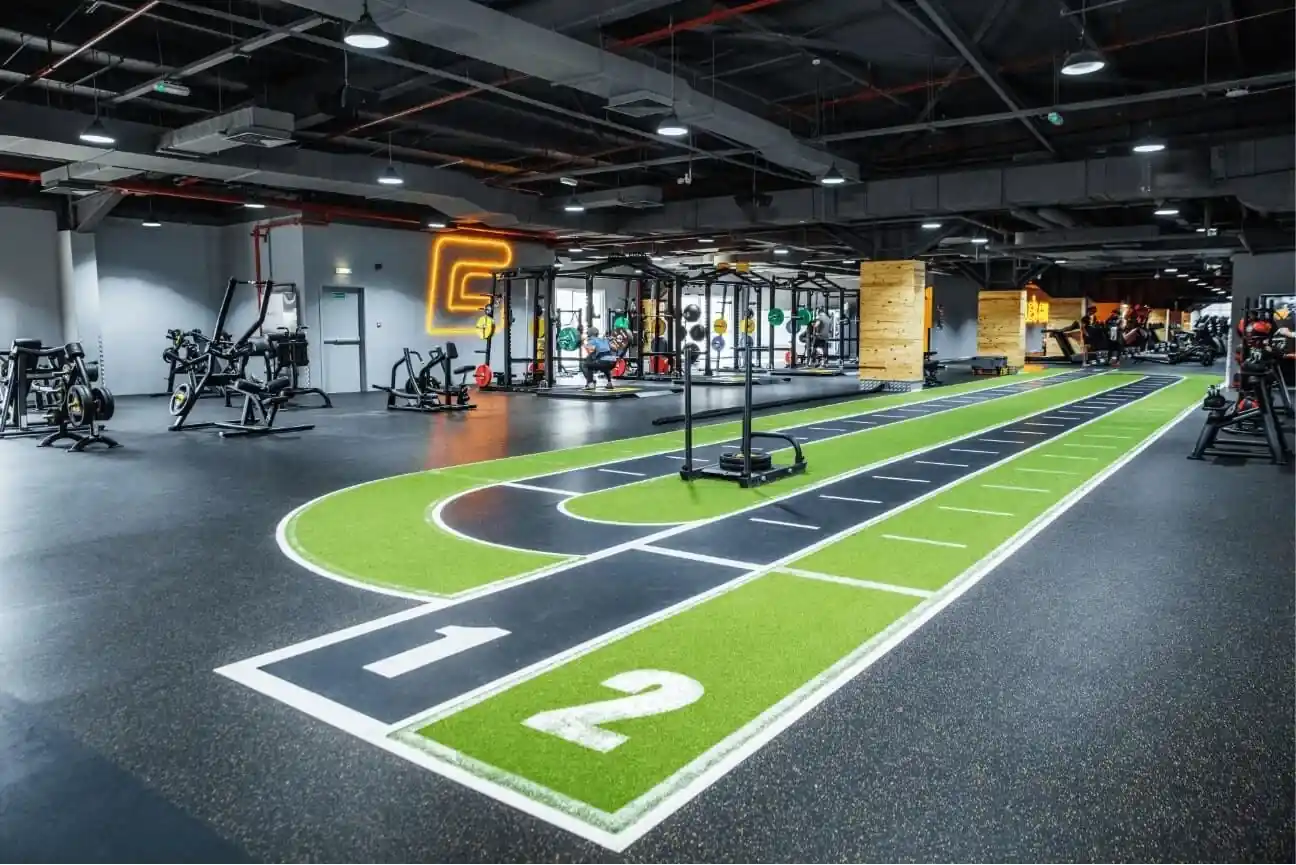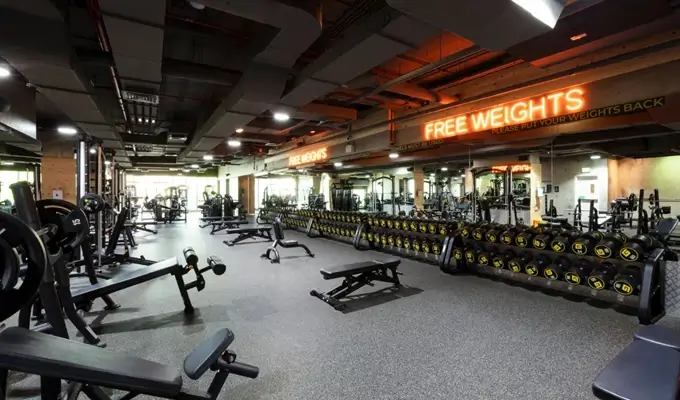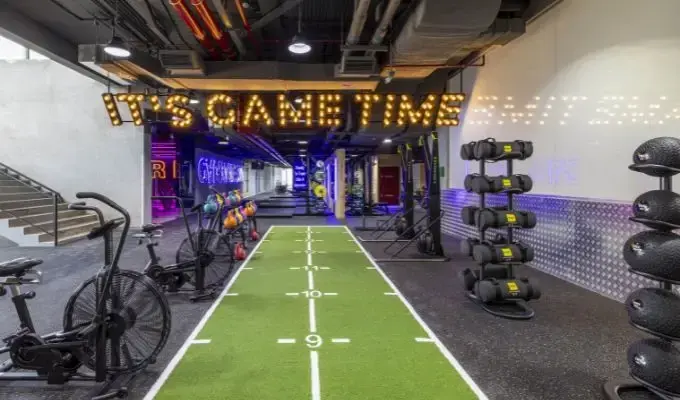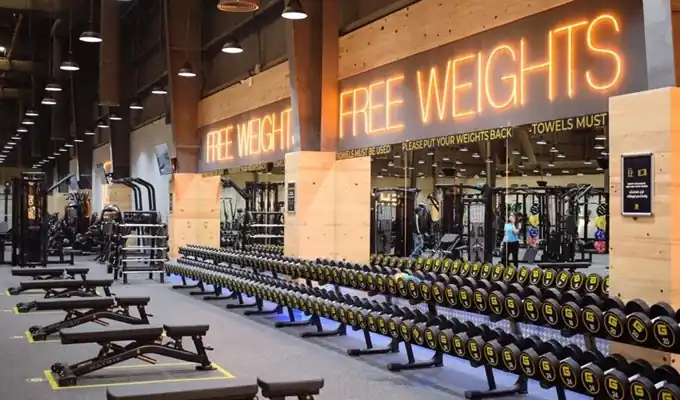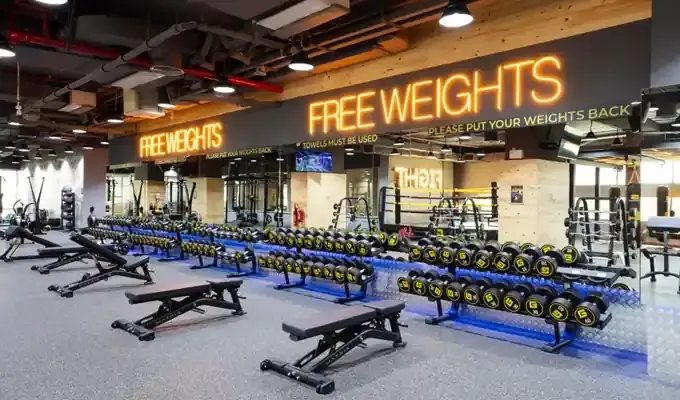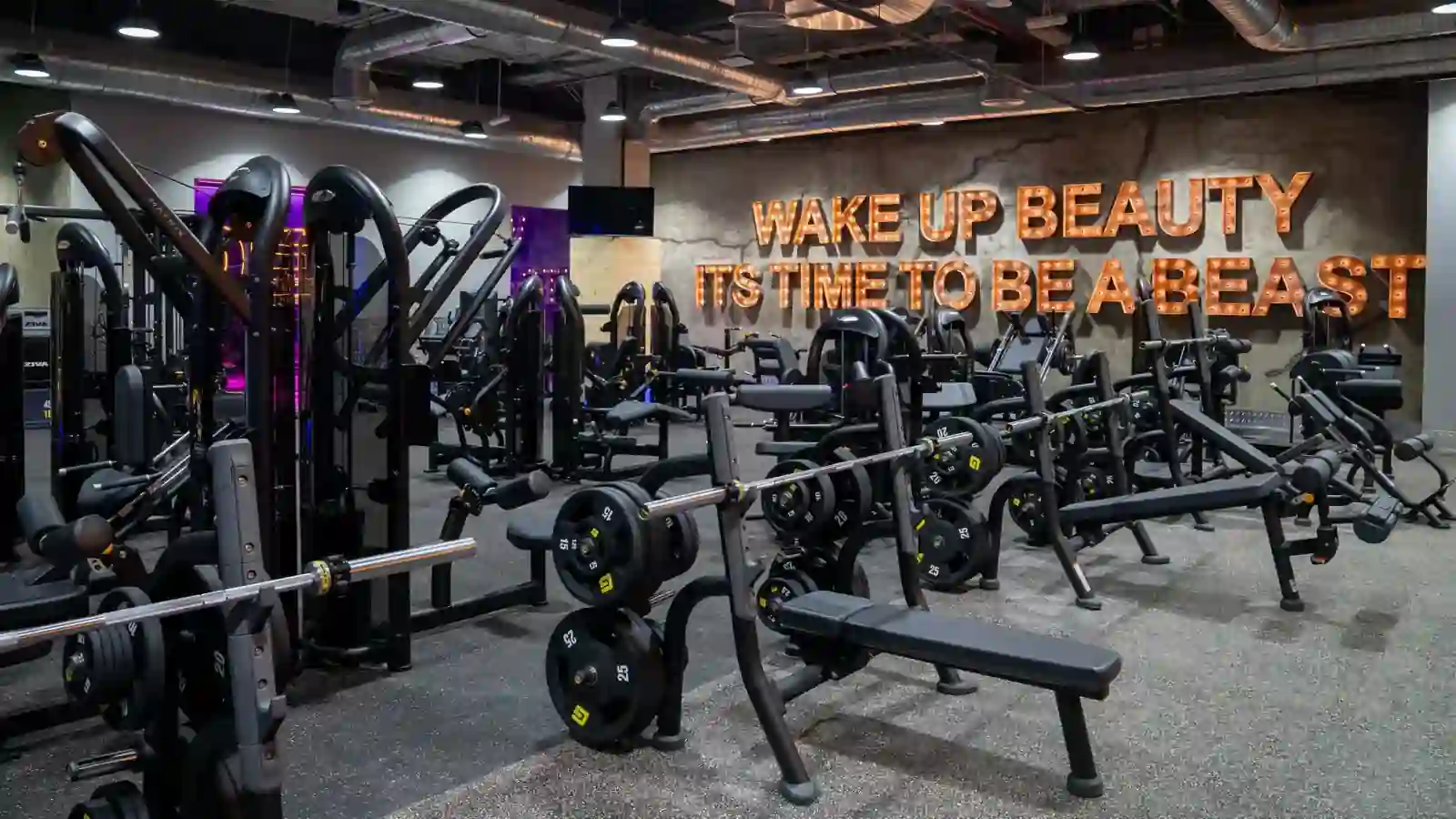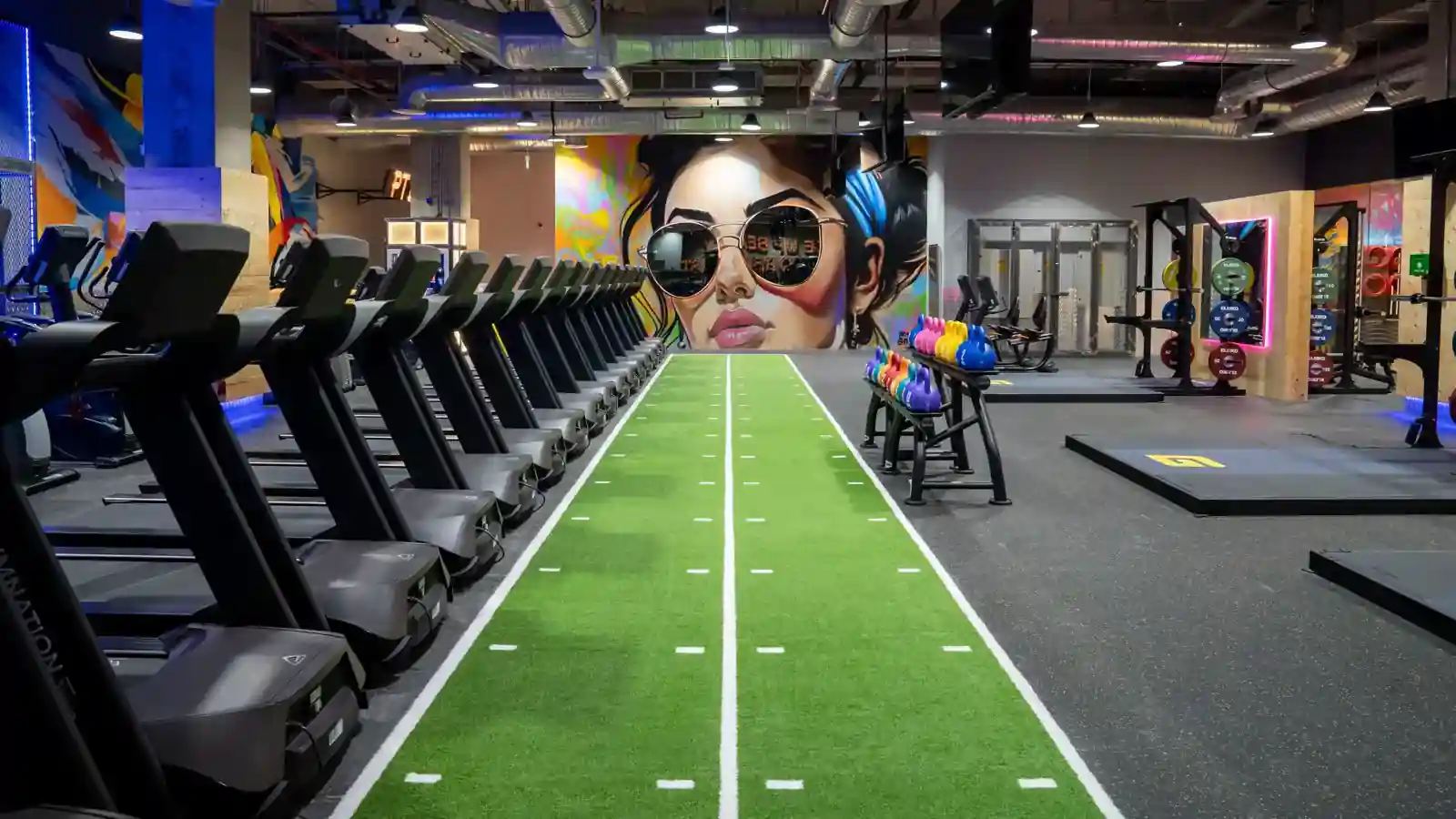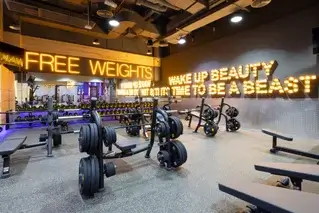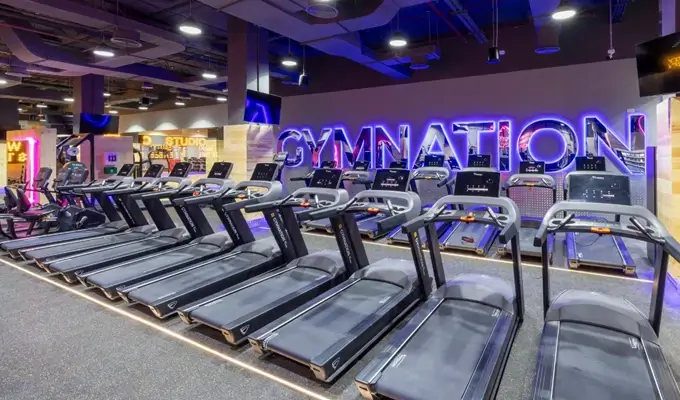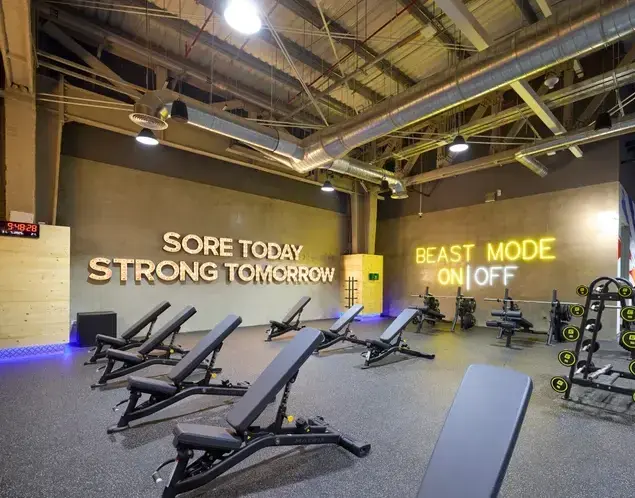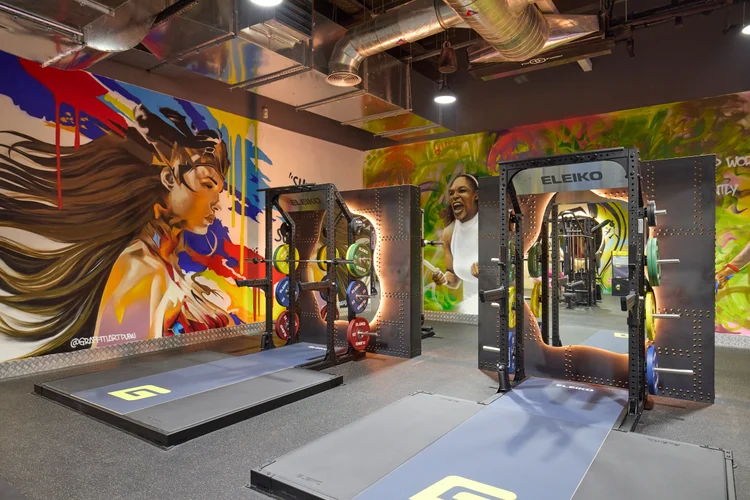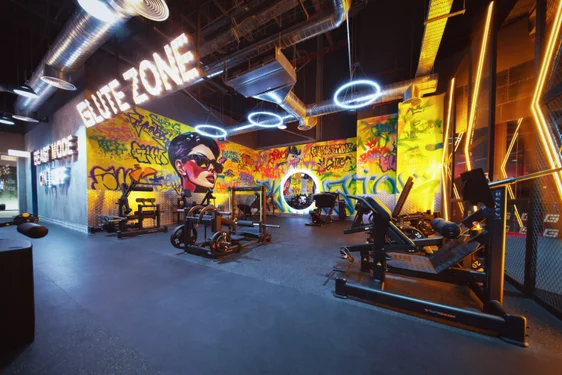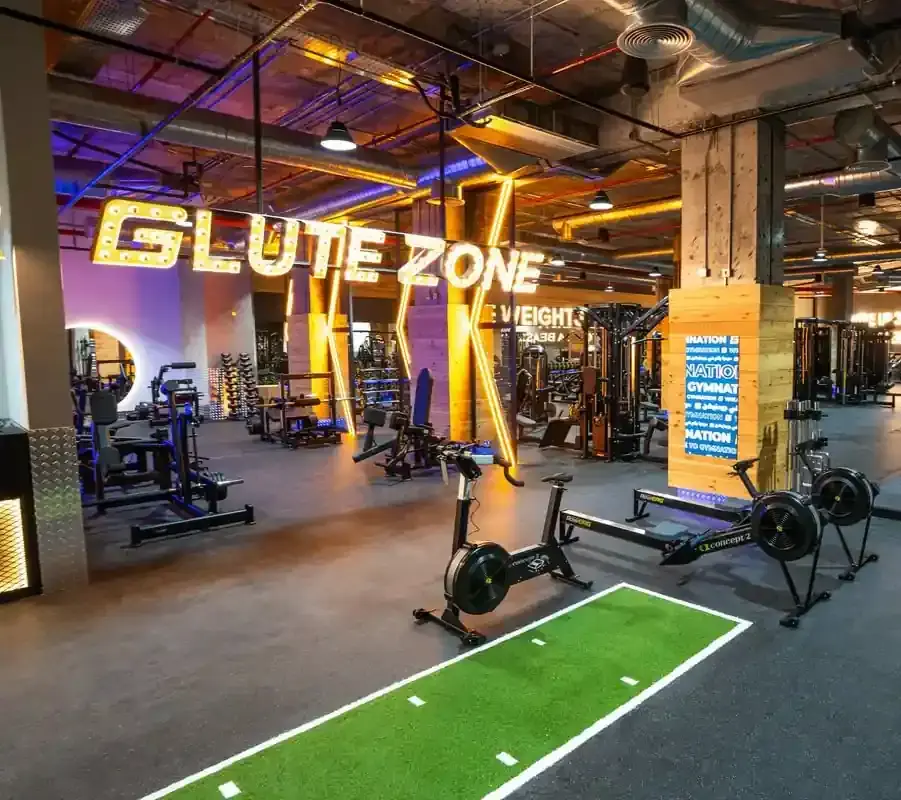The opinions shared in the GymNation blog articles are solely those of the respective authors and may not represent the perspectives of GymNation or any member of the GymNation team
Best 6 Fitness Trackers 2024
SIGN UP FOR YOUR FREE DAY PASS TODAY!
Unsure about which fitness tracker is right for you? Look no further.
Men's Health writers and editors have been testing fitness trackers since 2015, starting with the very first Apple Watch.
We began comparing trackers in 2017, breaking down options for activities like strength training, running, hiking, golf, and more. In 2024, we're more knowledgeable about fitness trackers than ever.
On the most basic level, the best fitness watches offer GPS connectivity to help you stay on your training course and basic activity tracking.
Depending on your fitness goals, such as losing weight or setting a new mile PR, incorporating a fitness watch can pinpoint training gaps, enhance runs, speed up recovery, and streamline your daily workouts effectively.
Should you Buy a Fitness Tracker?
To determine if a fitness tracker is right for you, pinpoint key metrics for measurement.
In a conversation with Dr. Michael J. Joyner, a human-physiology expert at the Mayo Clinic, he emphasized the importance of relevant data based on your goals.
For instance, if completing a 10K is your aim, your running endurance matters more than your respiration rate. Consider how collecting detailed data aligns with your objectives.
What Is the Best Fitness Tracker Right Now?
Over the past eight years, Men's Health has tested well over 50 of the latest and greatest fitness tracker releases, spanning from brands like Garmin, Suunto, Apple, and more.
We've seen fitness trackers grow through each generation, which gives us an encyclopedia of knowledge in being able to cross-compare older watch models to their new versions to see if an upgrade is actually worth the price.
Right now in 2024, we currently list six fitness trackers that are worth your hard-earned cash, but if you want to know our number one pick before we start that would be the Garmin Forerunner 265.
The tracker is versatile and lightweight, has an easy-to-use interface, and packs a ton of fun extra features—all for a respectable mid-tier price.
What to Look for When Buying a Fitness Tracker
Fitness trackers can get expensive real fast.
To help find the right fitness tracker for you, consider these three key factors first and foremost before looking at shiny features.
Accuracy
The accuracy of a fitness tracker begins and ends with how precisely it tracks your heart rate (most other stats, with the exception of new hydration tracking features, are derived from this baseline data).
This mark is as much about pure accuracy as it is about consistency of accuracy, which is key in helping you understand your own fitness trends.
We rated Wasimo W1 as the most accurate fitness tracker due to our Fitness Director's findings on the device.
Battery Life
Excluding the Apple Watch Ultra and the Samsung Galaxy Watch 6, which are both hybrid smartwatches and fitness trackers, the tested fitness trackers are engineered to last for days, and in some cases, even weeks on a single charge.
We appreciate fitness trackers that require minimal charging, especially those that can endure long durations while utilizing their GPS function.
During our battery life assessments, the Suunto Race stood out with up to 40 hours of GPS runtime on one charge, while the Coros Pace 3 impressed us with over two weeks of battery life in its basic mode.
Durability
All fitness trackers are made to take a beating, but some are better designed than others.
Look at case construction and screen construction.
The most advanced fitness trackers are typically made with stainless steel, titanium, or another type of quality metal.
For screens, sapphire glass is a premium spec to look for thanks to its high scratch resistance and strength.
Sometimes the most durable fitness tracker is unnecessary, though, especially if you are using it for pavement running.
In fact, a plastic construction fitness tracker can be a much better choice for cardio-intensive activities like running and biking, since the material is going to be much lighter than stainless steel or titanium.
On the flip side, if you are using your fitness tracker for strength training (or hiking or trail running) it would make sense to look for stronger materials.
How We Selected
Over the past eight years, we collaborated with fitness and gear editors from Men's Health to identify the top fitness trackers.
Our experts, including Fitness Director Ebenezer Samuel, C.S.C.S., Senior Editor Brett Williams, NASM, and Senior Gear and Commerce Editor John Thompson, rigorously tested numerous fitness trackers, assessing them based on accuracy, design, durability, and price.
We update our lineup of fitness trackers seasonally, so you can expect up-to-date information that takes into account the latest fitness tracker releases.
BEST FITNESS TRACKER OVERALL
Garmin Forerunner 265

PROS
- Simple user interface
- Comfortable, stretchy strap
- Crisp AMOLED display
- Super lightweight and thin design
- Comes with special features like Training Readiness and Gear log
- Solid feedback on a wide variety of activities, including strength training
- Garmin Connect app is smooth and fun to use
CONS
- Touch screen
- Learning curve when tracking strength training
The Forerunner 265 is about as balanced of a fitness tracker as one can find.
It has a beautiful AMOLED display, making it easy to read in all parts of the day (even in direct sunlight).
It comes in a 42mm and 46mm size.
The Forerunner 265 is also seriously lightweight (well under 50 grams), so you won't have any concerns about feeling the device on your wrist.
As far as navigation goes, the Forerunner 265 has five clean buttons to help aid in touchscreen navigation.
We had trouble at times scrolling on the touchscreen after running in cold and windy weather (it seemed like the screen wasn't responding to our dry hands), but a quick pivot to using the buttons helped avoid any serious navigation issues.
We do like how the Forerunner 265 ditches a scrollable crown; it makes the watch leaner and removes common issues where the crown can catch dirt or dig into the wrist when wearing.
The best part about the Forerunner 265: it's library of features. You get heart rate variability (HRV), zone training, and even sleep tracking.
New to the Forerunner 265 is also Garmin's Training Readiness, which used to only be available on more expensive Garmin watch models.
Training Readiness is fun to have because it takes into account metrics like sleep score, recovery time, acute training load, HRV status, and more to determine when your body is best suited for a hard workout—and when you might need to dial it back for the day so your training doesn't become counter productive.
The Forerunner 265's wide array of workout modes you can choose from makes it super versatile. The Forerunner 265 is actually pretty comfortable to wear during strength training.
As far as tracking strength training, the device will actually track your different sets and number of reps.
Now, the learning curve on programming your strength training is more difficult than we like, but once you learn how to insert your workouts—and once you get in the habit of tapping your watch as you move to your next set—the feature is actually pretty fun to use.
Inside the Garmin app, you have a ton of other interesting features.
There's a section on race training and planning, where you can log your upcoming events and program in your specific workouts.
There's an "Insights" feature which lets Garmin send you motivational messages and training suggestions.
Next, there's a "Gear" section, a standout feature we thoroughly enjoyed testing.
Here, you can input products such as your running shoes and monitor the mileage you cover with them before it's time for a replacement (our suggestion is to retire your running shoes between 300-500 miles).
The Forerunner 265 is your all-around player to helping achieve your fitness goals. Look here first before you start examining other fitness trackers.
Look it up on the Garmin official site
| Weight | 47g |
|---|---|
| Battery Life | Up to 13 days in smartwatch mode. Up to 20 hours in GPS mode |
| Water Resistance | 50m |
| Sizes Available | 42mm, 46mm |
| Satellite Systems | Garmin Multi-Band GPS |
| Sleep Tracking | Yes |
| Warranty | 1 year |
Suunto Race

PROS
- Crisp AMOLED display
- Massive battery life for a smart watch of this caliber
- Clean user interface
- Connected app is simple and easy to navigate
- Cool, rugged style
- More comfortable strap than the Forerunner 265
- Precise GPS tracking makes it suitable for hiking and trail running
CONS
- Screen size and weight might be too bulky for some
- We recommend buying the titanium edition for $100 more to help cut down on watch weight
Upon initial inspection of the titanium edition of the Suunto Race, we were struck by its substantial size, vibrant display, and sleek, durable design.
Suunto has a longstanding reputation for crafting exceptional fitness trackers and outdoor watches.
However, our experience testing the Race has led us to the conclusion that this particular device stands out as the pinnacle of Suunto's offerings.
For starters, Suunto did not try and go toe-to-toe with Garmin on packing in a ton of features, which is a good thing.
Instead, the Suunto Race delivers core features like heart rate variability (HRV), GPS tracking, zone training to determine workout intensity, and Vo2 max estimates.
The Suunto app if straightforward and easy to navigate all this captured data. As for the user interface of the watch, we found no issue with lagging like other fitness trackers sometimes have.
Our two favorite highlights from the Race's software includes the GPS system (the Race connects to 5 satellite systems to track your routes in crowded cities and outdoor trails), and the zone training readings (this is especially useful to have if you are focusing on zone 2 training).
Here's where the Suunto Race sets itself a part from other fitness trackers:it's physical design.
We tested the titanium case edition of the Race (which is an extra $100 in price), but if we had to choose again we would recommend the titanium over the stainless steel due to the lighter weight (the titanium edition weighs 69 grams compared to the stain steel's 83 grams).
Suunto added a bright AMOLED touch screen to its 49 millimeter case size to take the watch to the next level in terms of visibility and crisp graphics.
The last great feature of the Suunto Race is its battery.
It can pack up to a 40 hours on Performance Mode (heart rate and GPS turned on), and up to 26 days in Standby Mode (heart rate off and no training).
The Suunto Race is a rugged fitness tracker with high durability, clean user interaction, and solid instruments. You can use it for multi-sport training, outdoor activities, and even strength training.
When you're not working out, you can toss it on your wrist and get some cool style points out of it.
Look it up on the suunto official site
| Weight | 69g |
|---|---|
| Battery Life | Up to 40 hours in Performance mode. Up to 5 days in Tour mode. Up to 26 days with daily heart rate off. |
| Water Resistance | 100m |
| Sizes Available | 49mm |
| Satellite Systems | GPS, GLONASS, GALILEO, QZSS, BEIDOU |
| Sleep Tracking | Yes |
| Warranty | 2 years |
Coros Pace 3

PROS
- Light as a feather (lighter than the Forerunner 265)
- Perfect for running
- Simple user interface and button navigation
- Cool watch designs to choose from
- Awesome price point
- Useful weather widget that provides hour-by-hour forecasts
- Reliable GPS tracking
CONS
- Has a touchscreen, but really it's best to navigate with its button
- LED screen isn't as bright and vibrant as AMOLED
The Coros Pace series has been one of the best bang for your buck GPS fitness trackers for a few years now.
The latest Pace 3 watch is our definitive best value pick in 2024 thanks to its featherweight design, reliable readings, and simple user interface.
On design, the Pace 3 pairs its lightweight build with some of the longest battery life out of the fitness trackers we tested; we're talking 30 hours of use in GPS mode and over two weeks in its basic mode with GPS turned off.
The Pace 3 does have a touchscreen interface that we found works pretty well for being such a small screen, but really this is a watch best navigated by its buttons (the scrollable crown is smooth and responsive).
There aren't a ton of features on the Pace 3, but there are definitely enough to make it worth the buy.
You have essentials like heart rate monitoring (with zone heart rate training breakdowns you can access in the app), and GPS tracking for route running.
The watch also comes with a barometric altimeter to provide elevation data, which is fun to use when trail running.
One of our favorite features to use on the Pace 3 was installing the weather widget.
The weather widget sources data from Apple Weather and provides a mapping of hour-by-hour weather on your watch, making it useful on days when you are dealing with intermittent bursts of rain.
The two biggest downsides of the Pace 3 are its plastic construction and its screen brightness.
The durability of the plastic is actually pretty tough, and even protective up to 50 meters when exposed to water.
However, the plastic is still more susceptible to cracking or damage than a stainless steel or titanium fitness tracker would be (the tradeoff between these materials though, is the plastic construction makes the Pace 3 lighter).
On screen brightness, the Pace 3 gets by on visibility for both day and night, but after we tested fitness trackers with AMOLED, it became pretty hard adjust back to a downgraded screen (the Pace 3 has a color LCD screen).
Last note we'll add is the user experience.
The Pace 3 is a fun watch that doesn't try and do too much. In fact, its perfect if you are looking for an entry level fitness tracker or if you want a device that won't break the bank.
The Pace 3 will still deliver notifications from your phone to wrist, so you won't be in the dark on texts or calls (the device won't make calls, though).
The Pace 3 includes several different digital watch face designs you can apply.
Coros even has several different models of the Pace 3, with nylon band and silicon band offerings that are more unique than other fitness trackers you can find.
To illustrate Coros' availability of cool designs, we asked to test the special edition color made for professional runner Ellud Kipchoge.
Look it up on the coros official site
| Weight | 30g |
|---|---|
| Battery Life | Up to 17 days in smart watch mode. Up to 38 hours in GPS mode |
| Water Resistance | 50m |
| Sizes Available | 42mm |
| Satellite Systems | GPS, GLONASS, Galileo, Beidou, QZSS |
| Sleep Tracking | Yes |
| Warranty | 2 years |
Apple Watch Ultra 2

PROS
- Sleek adventure watch design
- Can be used as a dive watch up to 100 meters
- Great for everyday use
- Siren for emergencies and water temp sensor
- Highly underrated durability
- Especially fun to use for strength training
CONS
- Popular colors sell out fast
- Battery life not as long as other outdoor watches
- Blood oxygen monitoring removed for the time being
With a starting price of $799, the Apple Watch Ultra may seem pricey, but it's not really outlandish compared to other devices in the same tier.
In fact, one can argue the Ultra is in a class of its own, blending the superior day-to-day use of an Apple Watch with rugged specs one might see on the most expensive Garmin and Suunto watches.
It contains the same new features as the Apple Watch Series 8, plus a few more. You get a bigger watch face, a seriously strong titanium frame, boosted battery life, and 100 meters of water resistance.
After wearing the Ultra for over a year now, we've noticed it reacts quite well to nasty falls and dings. It's fallen from shoulder high and smacked right into concrete and come away unscathed.
It's also come in contact with an olympic barbell from time to time.
None of this means you shouldn't remember to flip your Ultra face to the inside of your wrist before a set of kettlebell cleans, but you do get peace of mind knowing that this watch can take a pounding.
The Ultra delivers a bigger screen than a Series 8, a unique Wayfinder face with a live compass, a siren for turning on in emergencies, a water temperature sensor, a depth gauge, and an upgraded speaker and microphone setup.
The Ultra's biggest win, though, is (you guessed it) its ultra-seamless link to iPhones.
Nothing beats the easy pairing (and later, data sharing) that can take place between any Apple Watch and an iPhone.
We've come to trust the Ultra for occasional everyday wear, traveling, and fitness.
Look it up on the apple official site
| Weight | 61g |
|---|---|
| Battery Life | Up to 36 hours |
| Water Resistance | 100m |
| Sizes Available | 49mm |
| Satellite Systems | Dual-frequency GPS |
| Sleep Tracking | Yes |
| Warranty | 1 year |
Masimo W1 Sport

PROS
- Superior metric tracking, especially when it comes to heart rate
- Innovative features like Hydration Index and blood oxygen sensors
- Display is simple and easy to read
- Generous warranty
- Connected app provides easy reading of data
CONS
- Doesn't have music storage or phone notifications
- Barebones design
The Masimo W1, a preferred choice of MH fitness director Ebenezer Samuel, is a frequent topic in our office discussions for good reason.
Samuel has identified it as the most precise tracker available. In tests, Samuel compared the W1 with a hospital-grade pulse oximeter.
The W1 consistently stayed within two beats per minute of the oximeter. In contrast, another popular fitness tracker showed a discrepancy of up to 10 beats per minute during the same evaluation.
Samuel unequivocally states, "The W1 is undeniably the most accurate smartwatch I've ever used."
Not only is it exceptionally accurate, but it also looks to the future by offering features to monitor hydration levels through a range of Hydration Index statistics.
The W1's ultimate calling card, though, is its tremendous accuracy.
Typically, if you want the most accurate heart rate readings during a run or training, you'd want to don a wearable heart rate strap around your torso.
The W1's pinpoint accuracy changes that.
Unfortunately, the W1 doesn't do much else: it has zero ability to download or listen to music and doesn't send phone notifications.
It's also $500, which is a steep price for a fitness watch.
Thus the ultimate decision on the W1 comes down to how serious you are about tracking your fitness, and how little you care about special features or sleek and sexy watch design.
Thankfully Masimo has a few releases up its sleeve in 2024. We're hoping they roll out some more user friendly fitness trackers that do more than just provide hardcore accuracy, but, if not, we won't be complaining.
Look it up on the masimo official site
| Weight | 34g |
|---|---|
| Battery Life | Up to 24 hours |
| Water Resistance | 50m |
| Sizes Available | 40mm |
| Satellite Systems | None |
| Sleep Tracking | Yes |
| Warranty | 3 years |
Samsung Galaxy Watch 6

PROS
- Surprisingly durable thanks to sapphire glass screen and titanium case
- Seamless compatibility for Android users
- Body composition data can be useful to get estimated readings of body fat
- Sleep coaching feature can be useful to some
- Solid value for the price you pay
- Tons of case colors and band designs to choose from
- Upgraded GPS and a new voice navigation feature
CONS
- Battery life can fluctuate from watch to watch
- Not ideal for iPhone users
Don't have an iPhone? No worries!
The Galaxy Watch 6 is your go-to, boasting a spacious scratch-resistant screen and a sturdy titanium case.
Among its standout features are advanced sleep coaching capabilities that analyze your sleep patterns and offer suggestions for improvement, along with a body composition reader.
Within moments, the Galaxy Watch 6 provides vital information, including an estimate of body fat.
While these metrics may not always be precise (as few at-home devices can accurately measure body fat), Samsung deserves recognition for striving to elevate measurement standards.
The Galaxy Watch 6 also delivers the features you've come to expect in high-end smartwatches.
That means accurate GPS specs and voice navigation.
Nailing these features (as Samsung does) is extra-critical in 2024, in part because the Galaxy Watch 6 actually has some new competition for Android users (namely, from Google's Pixel Watch).
The Galaxy Watch gets the edge as our preferred pick for Android owners thanks to several generations of trial and error.
The array of features available and the materials used to craft the watch have been optimized a few times over, thus producing a seriously strong, long-lasting fitness tracker (and everyday smart watch) most users will be happy adding to their training arsenal.
Look it up on the samsung official site
| Weight | 33g |
|---|---|
| Battery Life | Up to 24 hours |
| Water Resistance | 50m |
| Sizes Available | 40mm, 44mm |
| Satellite Systems | GPS |
| Sleep Tracking | Yes |
| Warranty | 1 year |
GET YOUR FREE TRIAL TODAY




















